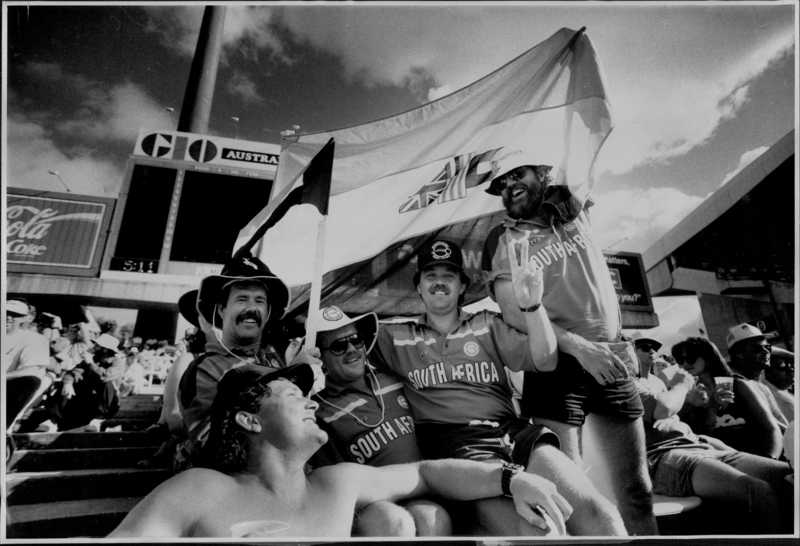 ONTHISDAY
ONTHISDAYPlaying for the first time in World Cup history, South Africa looked like they were the favorites to lift the trophy as a vibrant young set of lads were ready to conquer the world. Just when everything was falling into place for South Africa, misfortune in the semi-final against England cost them.
The 1992 edition saw a lot of improvisation from the previous ones. For the first time teams were to play in color uniforms, the use of white balls, and matches were scheduled to play under lights. A rain rule was also put in place, not the Duckworth-Lewis method but a different one.
Their journey till the semi-finals
For starters South Africa made a grand entry as they crushed the then defending champions Australia by 9 wickets chasing 171 in their first match. However, they faltered in their next game when they lost against New Zealand followed by another loss against Sri Lanka. Low on morale, South Africa had to bounce back strongly and it came through a stupendous spell from Meyrick Pringle. Defending a small total of 201 against the likes of Desmond Haynes, Brian Lara, Richie Richardson and Gus Logie was always a daunting task, but Pringle ran past the top order as he dismissed four of the top 5 batsmen for single digits. His match winning performance fetched him the player of the match award. Later, they went on to win both their matches, against Pakistan they won a rain affected match where they defended 194 in 36 overs and against Zimbabwe they chased down a meagre target of 164.
Even with four wins their qualification was in jeopardy when they lost against England, but a thrilling win against India in their last match of the league stage ensured a spot in the semi-finals. In a rain curtailed situation, the match was revised to 30 overs a side with South Africa having the advantage with the toss. India on the back of a half century from their skipper Mohammad Azharuddin, posted a total of 180 in their allotted 30 overs. A tricky total always needs a good start from the openers and that is what the South African openers provided. Both Peter Kirsten and Andrew Hudson got to their half centuries and posted an opening partnership of 129 that laid the foundation for the chase. South Africa jumped to third spot and their clash was set up against England in the semi-final.

Semi-final
England were put into bat after South African skipper Kepler Wessels won the toss. In their allotted 45 overs they managed to score 252 runs thanks to an excellent 83 off 90 balls from Graeme Hick. Pringle was the pick of the bowlers with two wickets at an economy of 4.0. The innings was curtailed at the start by two overs as South Africa were slow with their over-rate and they were fined for it as well.
South Africa got off to a decent start in their chase but lost their way in between, until Jonty Rhodes got them back into the game. With five overs remaining SA needed 47 to win and that is when the clouds opened up and the equation was further reduced to 22 off 13. Both the teams had contrasting opinions as Brian McMillan, who was at the crease when the rain came, wanted to continue but Graham Gooch was reluctant of it as their bowlers were struggling to grip the wet ball.
When the rain stopped, a total of 12 minutes was lost and South Africa’s target was reduced from 22 off 13 to 21 off 1 ball through “the most productive over method”. Hence, England won the 2nd semi-final under controversial circumstances. On a rather interesting note, there was a reserve day in place for the semi-final, but the host broadcaster, Channel Nine insisted the match should be finished on the scheduled day.

What was the rain rule in place for the tournament?
A new rule - Most Productive Overs (MPO) method - introduced for the tournament meant the target (in this case) was reduced only by the amount of runs the team batting first had scored in their least productive two overs with the bat which threw up the next-to-impossible equation of 22 needed off 1 ball (when in fact it was actually 21 off 1). In reality, South Africa had to suffer for their own brilliance - Pringle’s excellent couple of overs which had yielded just one run had been deducted from the target. Rightfully the MPO method soon gave way to the now used Duckworth-Lewis-Stern one.